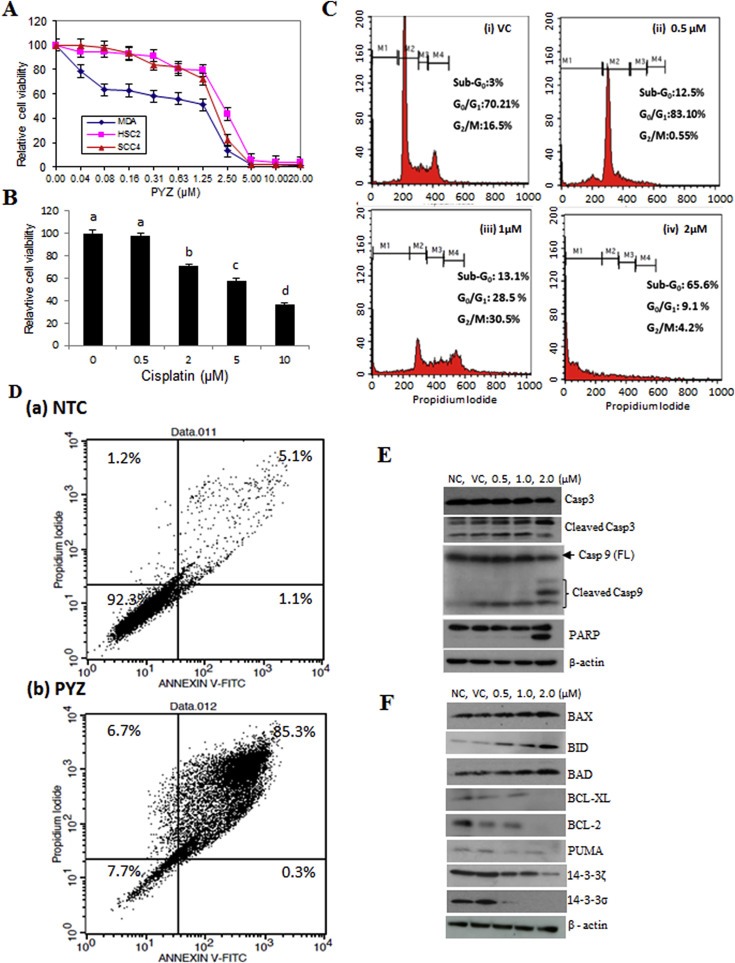Figure 2.

(A) Dose dependent effect of pyrithione zinc (PYZ). Dose dependent effect of PYZ treatment was determined using 10‐point, 2‐fold serial dilutions (40 nM–20 μM) on SCC4 (triangle), MDA1986 (diamond) and HSC2 (square). (B) Cisplatin dose dependent effect on SCC4 (0–10 μM). Treatment groups denoted by different letters represent a significant difference at p < 0.05 (ANOVA followed by Fisher's LSD test). (C) Cell cycle analysis. Cell cycle analysis was carried out by flow cytometry using propidium iodide (PI) staining for measuring the DNA content of SCC4 cells treated with PYZ for 48 h: (i) vehicle control, (ii) 0.5 μM PYZ, (iii) 1 μM PYZ and (iv) 2 μM PYZ. (D) Annexin V assay. Annexin V assay carried out after the treatment with 2 μM PYZ in SCC4; PYZ treated cells showed an increase in the fraction of apoptotic cells. (E) Western blot analysis. Panel represents Western blot analysis depicting dose dependent effect of PYZ treatment in SCC4 cells on expression of caspase 3 and increased levels of cleaved caspase 3; caspase 9 and increased levels of cleaved caspase 9; PARP and increased levels of cleaved PARP. β‐Actin served as a loading control. (F) Effect of pyrithione zinc on Bcl2 family of apoptosis proteins and 14‐3‐3 isoform proteins. Treatment with PYZ upregulated the expression of pro‐apoptotic proteins – Bax, Bid and Bad, and downregulated the expression of anti‐apoptotic proteins – Bcl‐xl, PUMA and Bcl2. 14‐3‐3 isoforms (ζ and σ) were also downregulated in response to PYZ treatment. β‐Actin served as a loading control.
